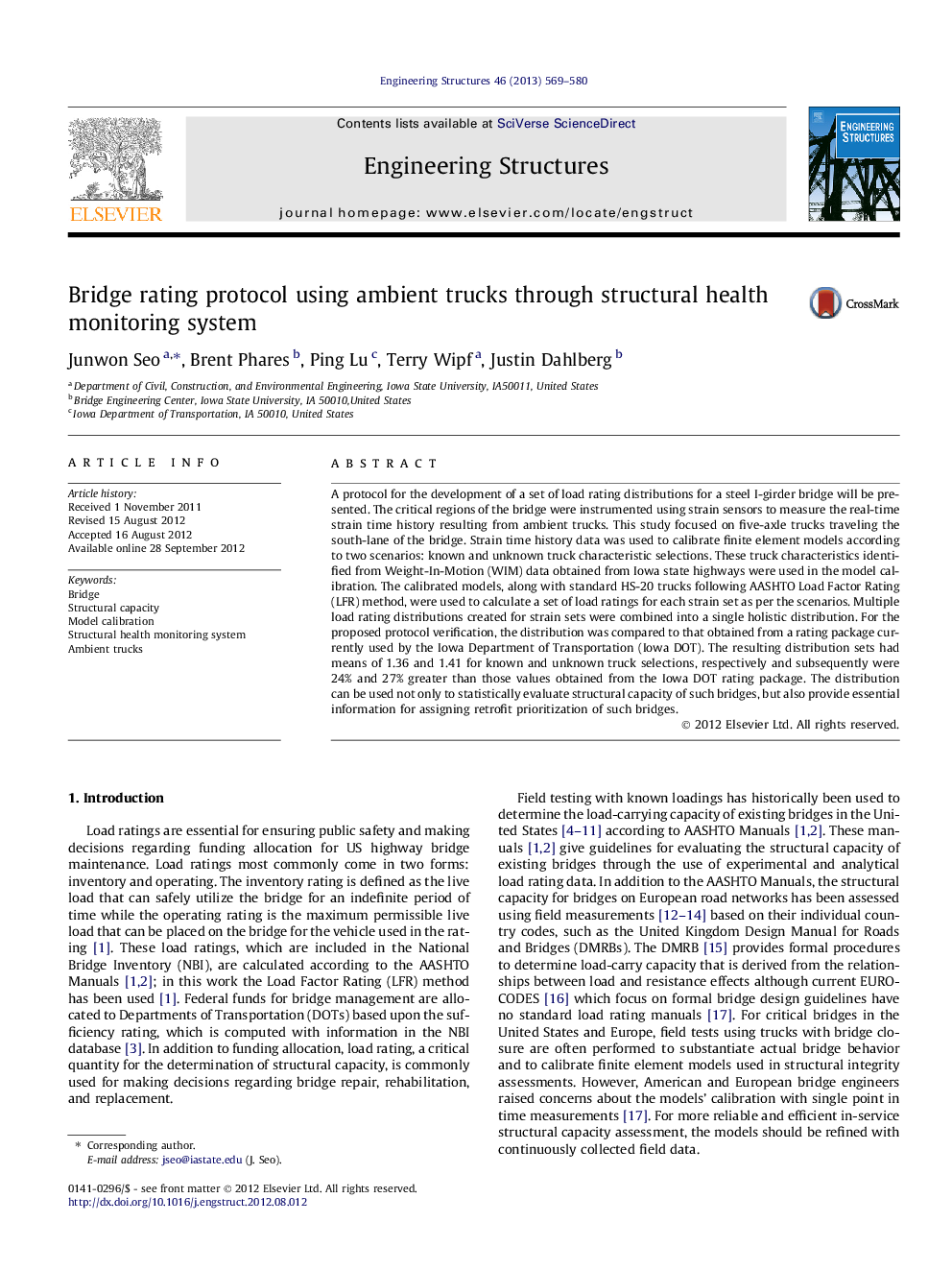| کد مقاله | کد نشریه | سال انتشار | مقاله انگلیسی | نسخه تمام متن |
|---|---|---|---|---|
| 267351 | 504399 | 2013 | 12 صفحه PDF | دانلود رایگان |

A protocol for the development of a set of load rating distributions for a steel I-girder bridge will be presented. The critical regions of the bridge were instrumented using strain sensors to measure the real-time strain time history resulting from ambient trucks. This study focused on five-axle trucks traveling the south-lane of the bridge. Strain time history data was used to calibrate finite element models according to two scenarios: known and unknown truck characteristic selections. These truck characteristics identified from Weight-In-Motion (WIM) data obtained from Iowa state highways were used in the model calibration. The calibrated models, along with standard HS-20 trucks following AASHTO Load Factor Rating (LFR) method, were used to calculate a set of load ratings for each strain set as per the scenarios. Multiple load rating distributions created for strain sets were combined into a single holistic distribution. For the proposed protocol verification, the distribution was compared to that obtained from a rating package currently used by the Iowa Department of Transportation (Iowa DOT). The resulting distribution sets had means of 1.36 and 1.41 for known and unknown truck selections, respectively and subsequently were 24% and 27% greater than those values obtained from the Iowa DOT rating package. The distribution can be used not only to statistically evaluate structural capacity of such bridges, but also provide essential information for assigning retrofit prioritization of such bridges.
► The load rating protocol for a steel bridge under ambient trucks was developed.
► Procedures for generating the load rating distributions were detailed.
► Strain data was obtained via a structural health monitoring system.
► Ambient truck characteristics were identified using Weight-In-Motion data.
► The protocol was validated by comparing the ratings with a practical quantity.
Journal: Engineering Structures - Volume 46, January 2013, Pages 569–580